Fiat Fiorino Qubo vs Toyota Proace City – Differences & prices compared
Compare performance, boot space, consumption and price in one view.
Find out now: which car is the better choice for you – Fiat Fiorino Qubo or Toyota Proace City?
The Fiat Fiorino Qubo () comes with a engine and transmission. In comparison, the Toyota Proace City (High Roof Estate) features a Petrol, Diesel or Electric engine with Manuel or Automatic transmission.
When it comes to boot capacity, the Fiat Fiorino Qubo offers , while the Toyota Proace City provides 912 L – depending on how much space you need. If you’re looking for more power, decide whether the of the Fiat Fiorino Qubo or the 136 HP of the Toyota Proace City suits your needs better.
In terms of consumption, the values are per 100 km for the Fiat Fiorino Qubo, and 18.10 kWh5.30 L for the Toyota Proace City.
Price-wise, the Fiat Fiorino Qubo starts at , while the Toyota Proace City is available from 20800 £. Compare all the details and find out which model fits your lifestyle best!
Fiat Fiorino Qubo
The Fiat Fiorino Qubo is a versatile option in the high-roof van segment, offering practicality without compromising on style. Its compact dimensions make it an ideal choice for urban environments, while the spacious interior ensures comfort for both passengers and cargo. Designed with efficiency in mind, this model is suited for those looking for a functional vehicle that meets everyday needs with ease.
detailsToyota Proace City
The Toyota Proace City High Roof Combi is designed to seamlessly blend practicality with comfort, making it an ideal choice for families and businesses alike. Its versatile interior allows for flexible seating and cargo arrangements, catering to a variety of transport needs. Equipped with modern technology and advanced safety features, this vehicle ensures a reliable and secure driving experience.
details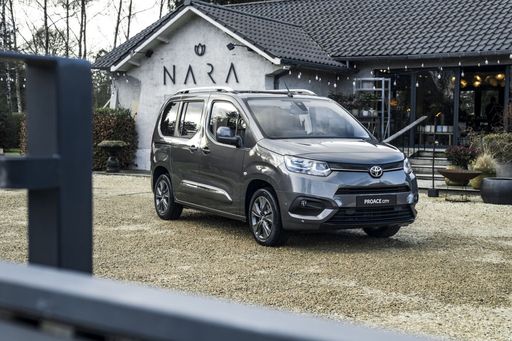 @ Toyota Deutschland
@ Toyota Deutschland
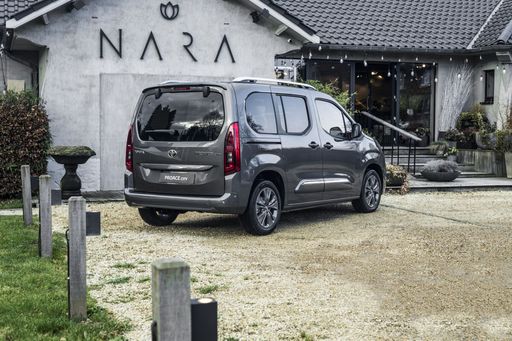 @ Toyota Deutschland
@ Toyota Deutschland
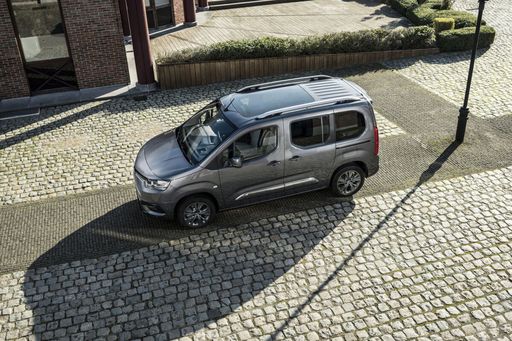 @ Toyota Deutschland
@ Toyota Deutschland
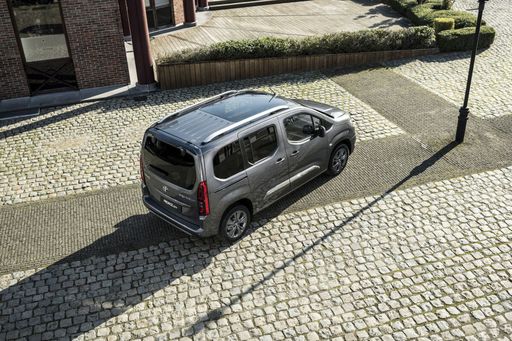 @ Toyota Deutschland
@ Toyota Deutschland
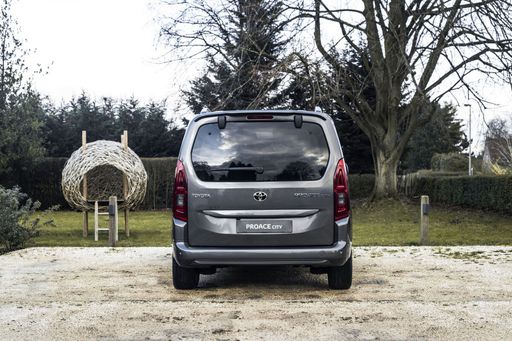 @ Toyota Deutschland
@ Toyota Deutschland
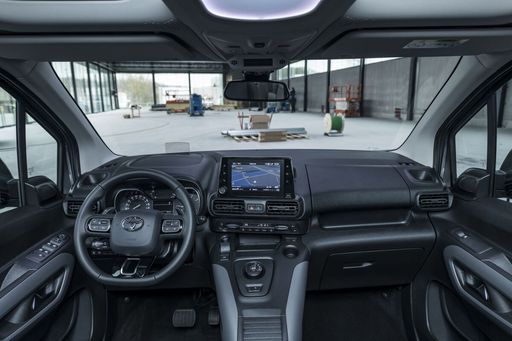 @ Toyota Deutschland
@ Toyota Deutschland

|
|
|
|
|
Costs and Consumption |
|
|---|---|
|
Price
-
|
Price
20800 - 42100 £
|
|
Consumption L/100km
-
|
Consumption L/100km
5.3 - 6.3 L
|
|
Consumption kWh/100km
-
|
Consumption kWh/100km
18.10 kWh
|
|
Electric Range
-
|
Electric Range
343 km
|
|
Battery Capacity
-
|
Battery Capacity
-
|
|
co2
-
|
co2
0 - 146 g/km
|
|
Fuel tank capacity
-
|
Fuel tank capacity
50 - 61 L
|
Dimensions and Body |
|
|---|---|
|
Body Type
-
|
Body Type
High Roof Estate
|
|
Seats
-
|
Seats
5 - 7
|
|
Doors
-
|
Doors
4 - 5
|
|
Curb weight
-
|
Curb weight
1366 - 1664 kg
|
|
Trunk capacity
-
|
Trunk capacity
322 - 912 L
|
|
Length
-
|
Length
4401 - 4751 mm
|
|
Width
-
|
Width
1848 mm
|
|
Height
-
|
Height
1812 - 1818 mm
|
|
Payload
-
|
Payload
525 - 869 kg
|
Engine and Performance |
|
|---|---|
|
Engine Type
-
|
Engine Type
Petrol, Diesel, Electric
|
|
Transmission
-
|
Transmission
Manuel, Automatic
|
|
Transmission Detail
-
|
Transmission Detail
Manual Gearbox, Automatic Gearbox
|
|
Drive Type
-
|
Drive Type
Front-Wheel Drive
|
|
Power HP
-
|
Power HP
102 - 136 HP
|
|
Acceleration 0-100km/h
-
|
Acceleration 0-100km/h
11.5 - 13.2 s
|
|
Max Speed
-
|
Max Speed
135 - 186 km/h
|
|
Torque
-
|
Torque
205 - 300 Nm
|
|
Number of Cylinders
-
|
Number of Cylinders
3 - 4
|
|
Power kW
-
|
Power kW
75 - 100 kW
|
|
Engine capacity
-
|
Engine capacity
1199 - 1499 cm3
|
General |
|
|---|---|
|
Model Year
-
|
Model Year
2024 - 2025
|
|
CO2 Efficiency Class
-
|
CO2 Efficiency Class
E, A
|
|
Brand
-
|
Brand
Toyota
|
Fiat Fiorino Qubo
An Introduction to the Fiat Fiorino Qubo High Roof Estate
The Fiat Fiorino Qubo High Roof Estate stands as a testament to practicality and efficiency in the compact car segment. Designed to cater to urban and suburban needs, this vehicle combines space and versatility, offering an efficient solution for families or small businesses alike.
Under the Bonnet: Performance and Efficiency
The heart of the Fiat Fiorino Qubo is its robust diesel engine. Ranging from 80 to 95 PS, this 4-cylinder engine balances power with fuel economy. With a 1.3 Multijet 16V engine, drivers can expect a smooth and responsive experience thanks to the manual gearbox and front-wheel drive configuration.
Fuel efficiency is a standout feature of the Fiorino Qubo, boasting an impressive consumption of 5.1 L/100 km. This efficiency makes it an economically attractive choice for those seeking to minimise their carbon footprint without compromising on performance.
Space and Comfort: Interior Excellence
The interior of the Fiorino Qubo has been thoughtfully designed to maximise space. With five seats and an ample boot capacity of 329 litres, it effortlessly accommodates passengers and their luggage. The smart use of space is further highlighted by its compact dimensions: 3957 mm in length, 1716 mm in width, and 1721 mm in height, making it ideal for city manoeuvres.
Despite its modest external dimensions, the cabin offers a surprisingly generous amount of room, ensuring a comfortable ride for all occupants. The ergonomic seating and quality materials contribute to a refined interior atmosphere.
Driving Dynamics: Handling and Comfort
The Fiat Fiorino Qubo's driving dynamics are engineered to provide an enjoyable yet practical driving experience. The vehicle accelerates from 0 to 100 km/h in a range of 11.9 to 13.9 seconds and reaches a top speed between 161 and 167 km/h, giving it adequate agility for urban traffic.
Handling is straightforward and predictable, a result of its balanced weight distribution and precise steering. The suspension setup ensures a comfortable ride, absorbing the imperfections commonly encountered on city roads.
Innovations and Environmental Commitment
Fiat places strong emphasis on innovation with the Fiorino Qubo, focusing on reducing emissions and enhancing efficiency. With CO2 emissions of 133 g/km, the vehicle achieves a CO2 efficiency class rating of D, aligning with modern environmental expectations.
Innovative design elements also include a well-structured chassis and efficient aerodynamics, which contribute to reduced fuel consumption and a quieter cabin environment.
Conclusion: Practicality Meets Economy
The Fiat Fiorino Qubo High Roof Estate blends practicality, economy, and innovative design in a compact package. With its efficient diesel powertrain, spacious interior, and city-friendly dimensions, it offers a compelling choice for those seeking a reliable vehicle that caters to a range of everyday needs.
Whether utilised for family outings or professional purposes, the Fiat Fiorino Qubo stands out as a capable and cost-effective option in the high roof estate segment.
Toyota Proace City
The Versatile Toyota Proace City: A Gamechanger in the Van Segment
In the bustling world of automotive innovations, the Toyota Proace City stands out as a versatile, high-roof van that combines practicality with cutting-edge technology. Designed to cater to the needs of businesses and families alike, the Proace City makes a compelling case for itself with various powertrain options, impressive load capacity, and modern amenities. Let’s dive into the technical details and innovations that make this model a standout choice.
Powertrain Variety: Meeting Diverse Needs
The Toyota Proace City offers a diverse range of powertrains to meet different driving needs and preferences. Whether you're looking for the traditional power of internal combustion engines or the modern efficiency of electric propulsion, the Proace City has got you covered. The petrol options include a 1.2 Turbo engine, producing 110 PS with a consumption rate of 6.3 L/100km. For diesel enthusiasts, a robust 1.5 D-4D Diesel engine is available, offering power outputs up to 130 PS and a consumption as low as 5.3 L/100km. Moreover, the electric versions pack a 50 kWh battery that delivers 136 PS with an efficient consumption rate of 19.4 kWh/100km, providing an impressive range of up to 284 km.
Technological Advancements and Efficiency
Innovation in the Toyota Proace City extends beyond its engines. It boasts an impressive array of technologies aimed at enhancing efficiency and safety. The CO2 efficiency classes range from A to E depending on the model, with emissions that meet Euro 6 standards, reflecting Toyota’s commitment to sustainability. The integration of various automatic and manual transmission options provides drivers with flexibility and control, ensuring a smooth and efficient driving experience.
Comfort and Practicality: Inside the Proace City
Step inside the Toyota Proace City, and you are greeted with a spacious and well-appointed interior. Depending on the configuration, the van offers seating for five to seven passengers, making it ideal for both family use and commercial applications. The boot capacity ranges from 322 to 912 litres, ensuring ample space for all your cargo needs. With maximum payloads of up to 869 kg, the Proace City is designed to handle heavy-duty tasks without compromising on passenger comfort.
A Design for Every Purpose
The Toyota Proace City spans a length between 4401 mm and 4751 mm, providing a substantial yet manageable vehicle size. The consistent width of 1848 mm and height reaching up to 1818 mm offer a solid road presence while ensuring maneuverability in urban settings. The notable variant selection includes designations like Club, Comfort, Flow, and Team Deutschland, each with optional automatic configurations to match different lifestyle and business demands.
Affordability and Operational Costs
With a starting price range from €24,835 to €51,245, the Toyota Proace City provides an accessible entry into the segment of high-roof vans. Its economical efficiency extends to operational costs, with monthly expenses ranging from €1,071 to €1,181, showcasing financial viability for both private owners and fleet operators alike.
Conclusion
The Toyota Proace City stands as a formidable contender in the van market, offering a blend of flexibility, efficiency, and modern technology. Its range of powertrains, spacious interior, and low operating costs make it a practical choice for anyone from urban professionals to family adventurers. Whether it's for work or leisure, the Proace City proves that a utility vehicle can be both functional and sophisticated.
The prices and data displayed are estimates based on German list prices and may vary by country. This information is not legally binding.
